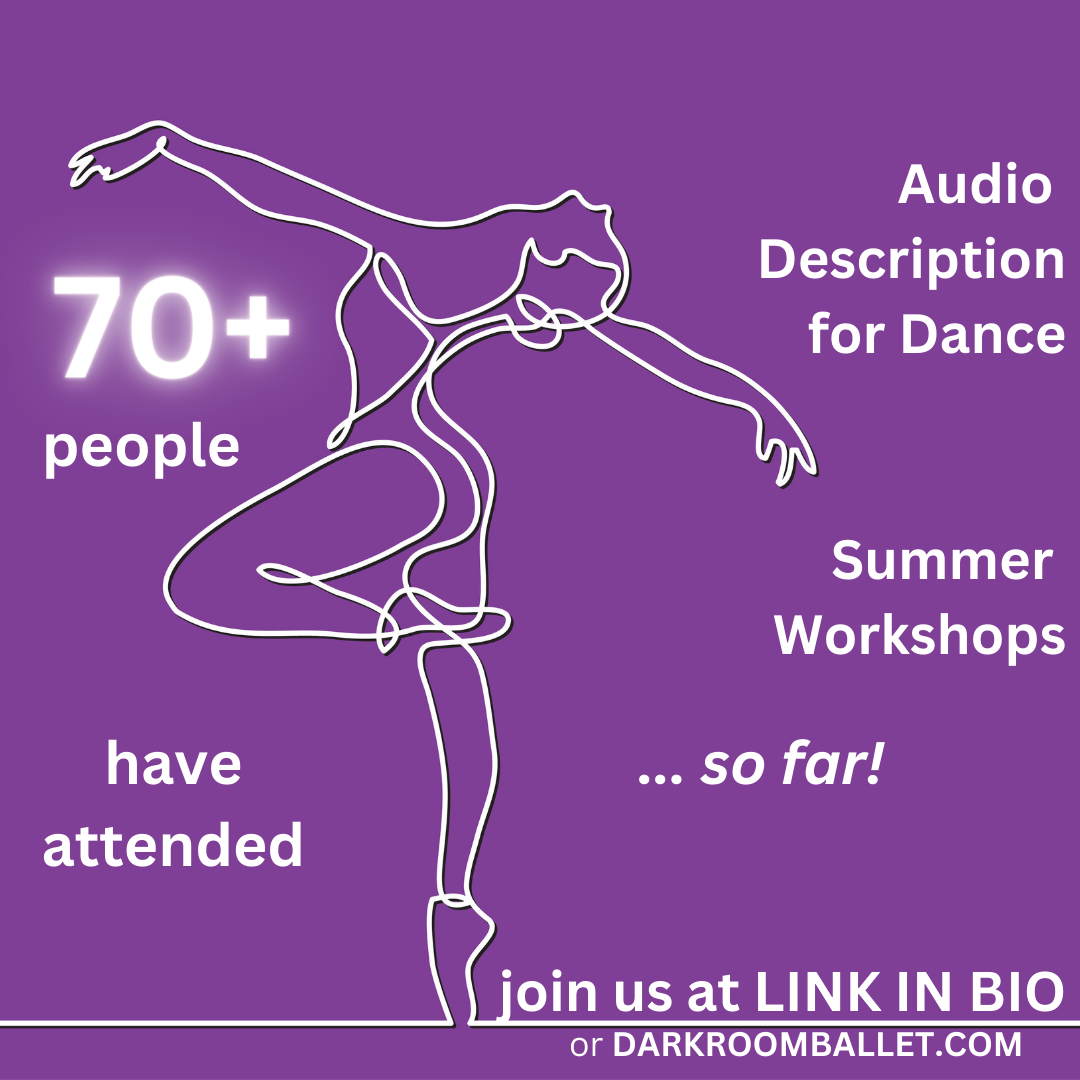70+ people have attended the Dark Room Audio Description for Dance Summer Workshops so far!
There are 4 workshops to go — join us again or for the first time. Students at all levels of vision, dance and audio description experience are welcome!
🎙️ Saturday, July 29: Narrative Components in Audio Description for Dance
✍🏼 Saturday, August 5: Script Preparation Strategies for Audio Description for Dance: Multiple Pathways!
🤔 Saturday, August 12: Yeah, But Was It Good? Learning How to Listen to Audio Description for Dance Critically
🩰 Saturday, August 19: Three Traditional Ballet Variations Explored Through Pedagogical and Theatrical Audio Description
For more info & to register:
Some of Krishna’s thoughts from recent workshops that social media doesn’t have:
Describing from physical sensation: Whether you start from the inside, or need to start from the mirror with the goal of finding what’s inside, remember that being able to identify and describe physical sensation is a learned skill that comes with practice, just like dancing, just like describing. Personally, I think that spending time thinking about how movements feel in our bodies has intrinsic value, a way of learning about ourselves and learning to trust our bodies and our perceptions. Even if you’re an audio describer exclusively, having understanding, knowledge, and empathy for physical sensations in your own body will only help you in cultivating your skills of describing other people’s movements.
Describing who is dancing: All dances are different and all dancers are different! Always know the names and pronouns of the dancers in the performance you are describing, and it is a common thing in dance performance for performers to portray characters whose names and pronouns are not their own! When a performer is in character, use the character’s name and pronouns, but if someone is dancing as themself, using the dancer’s real name and pronouns is a simple and incredibly helpful addition for your audience. And for dancers: when you are performing, think about your role in the performance, what you contribute to the piece as a whole, and think about how to explain it in words.
Describing emotion: Remember that emotion is why dance exists! Emotion is the birthplace of dance, and everyone deserves to share in that experience. Conversations between audio describers and dancers, choreographers, and the entire creative team can be incredibly fruitful when it comes to emotional communication. Emotional expression is a wonderful and fascinating thing, because all humans experience it, but each one of us expresses it outwardly in our own, unique, authentic way; dance combined with strong audio description can be an incredibly powerful tool for empathy.
Describing within a structure: I know that it is common for audio describers to have very limited access to dance rehearsals, maybe just dress rehearsal at best, but just because it’s common, that doesn’t mean that it’s good. If you are an audio describer who can ask for more time and more access, please do it! You deserve it and your audience deserves it. If you create dance performances, start thinking about audio description at the start of your rehearsal process, not the end! Some of the most wonderful art created for blind audiences today had an audio describer in the rehearsal studio on day one (shout out to Kayla Hamilton!). Having an audio describer as a part of the creative team is something I advocate for.
